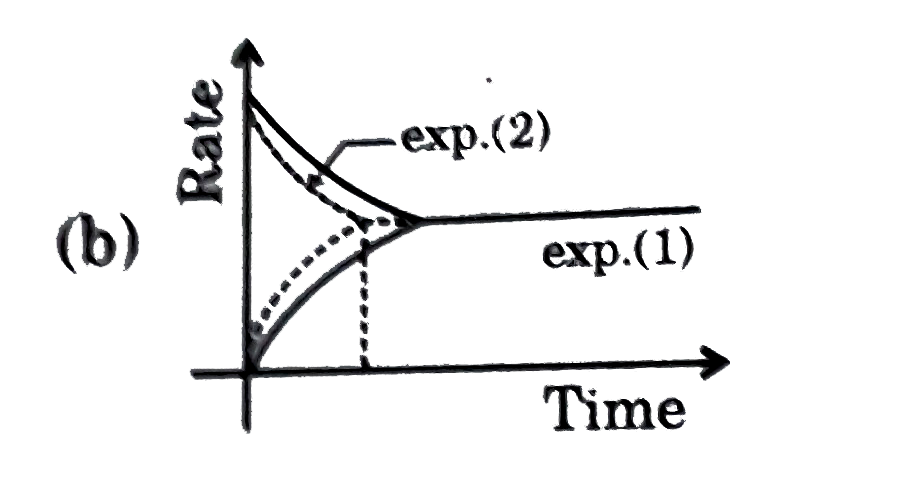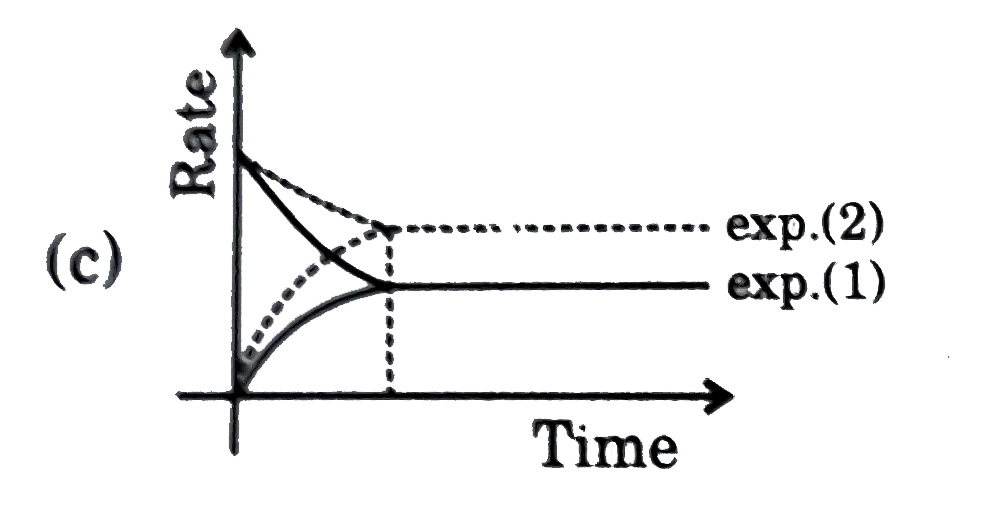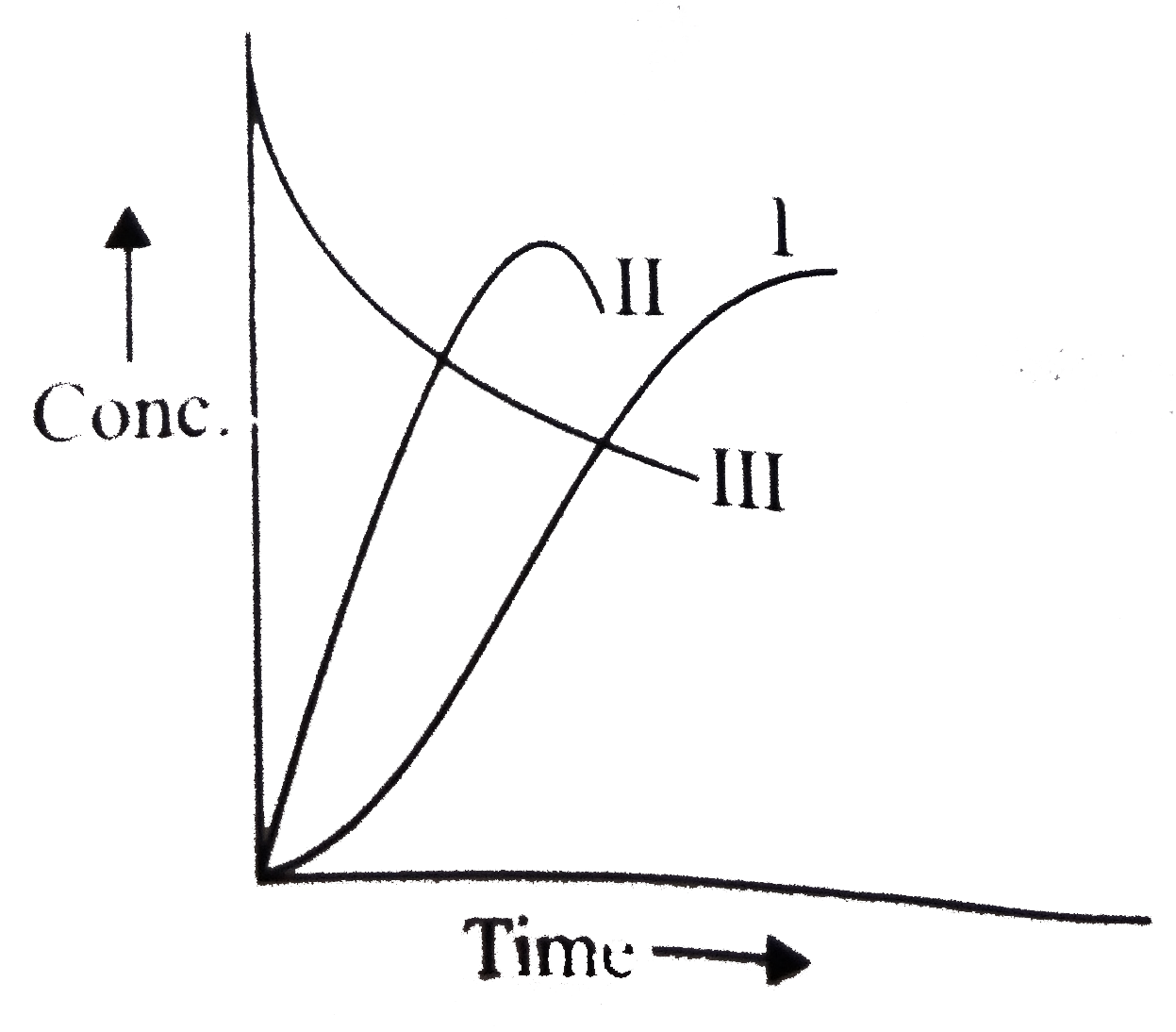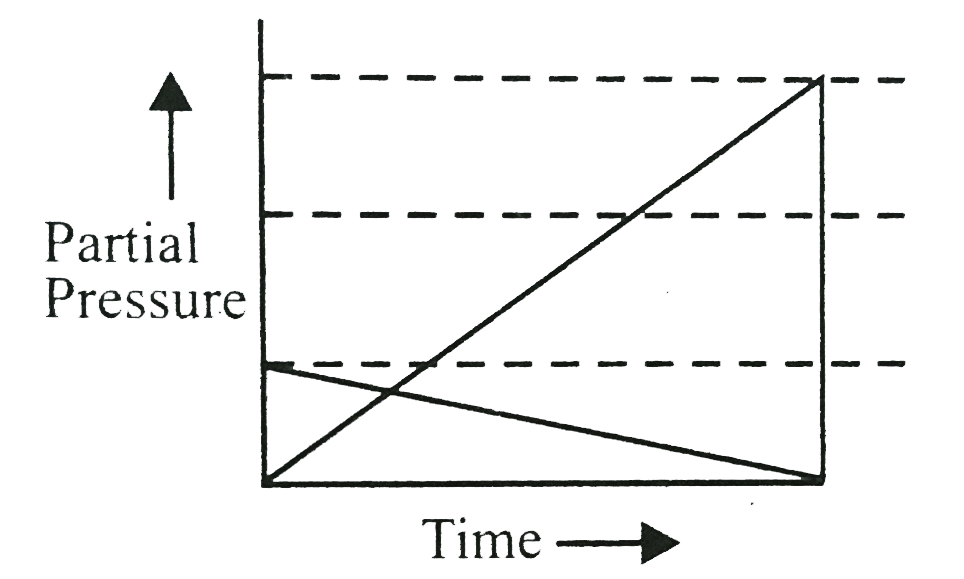In two different experiments, equilibrium A(g)⇔B(g) is established by initially taking reactant only. In first experiment, reaction is carried out in absence of catalyst and in second experiment reaction is carried out in presence of catalyst, then, which of the following curve of rate us time for forward and backward reaction hold true in these two experiments ?




The correct Answer is:A
Step by step video, text & image solution for In two different experiments, equilibrium A(g) hArr B(g) is established by initially taking reactant only. In first experiment, reaction is carried out in absence of catalyst and in second experiment reaction is carried out in presence of catalyst, then, which of the following curve of rate us time for forward and backward reaction hold true in these two experiments ? by Chemistry experts to help you in doubts & scoring excellent marks in Class 12 exams.
Topper's Solved these Questions
- BOOK - GRB PUBLICATIONCHAPTER - GRAPHICAL INTERPRETATIONEXERCISE - H. Chemical Kinetics1videos
GRAPHICAL INTERPRETATION
- BOOK - GRB PUBLICATIONCHAPTER - GRAPHICAL INTERPRETATIONEXERCISE - Chemical Kinetics80videos
GRAPHICAL INTERPRETATION
- BOOK - GRB PUBLICATIONCHAPTER - GRAPHICAL INTERPRETATIONEXERCISE - G. Chemical Equilibrium1videos
GRAPHICAL INTERPRETATION
- BOOK - GRB PUBLICATIONCHAPTER - F-BLOCK ELEMENTSEXERCISE - Subjective type7videos
F-BLOCK ELEMENTS
- BOOK - GRB PUBLICATIONCHAPTER - HYDROCARBON (ALIPHATIC)EXERCISE - Previous years jee questions28videos
HYDROCARBON (ALIPHATIC)
Similar Questions
Mention a reaction , other that the mentioned in the above experiment , which can be carried out of verify the law of conservation of mass.
View SolutionA chemical reaction is carried out twice with the same quantity of reactants to forms the same products but the pressure is different for the two experiments. Which value does not change?
View Solution
Knowledge Check
- Question 1 - Select One
Rate of a reaction increases by 106 times when a reaction is carried out in presence of enzyme catalyst at same temperature. Determine change in activation energy.
A−6×2.303RTB6×2.303RTC6RTD−6RT - Question 2 - Select One
A first order homogeneous reaction of the type X→Y→Z (consecutive reaction) is carried out in a CSTR. Which of the following curves reacpectively show the variation of the concentration of X,Y nad Z with time
 AI,II,IIIBIII, II, ICIII, I, IIDII, III, I
AI,II,IIIBIII, II, ICIII, I, IIDII, III, I - Question 3 - Select One
If for a reaction in which A(g) converts to B(g) the reaction carried out at const.
V & T results into the following grapg.
 Athen the reaction must be A(g)→3B(g) and is a first -order reaction.Bthen the reaction must be A(g)→3B(g) and is a second-order reaction.Cthen the reaction must be A(g)→3B(g) and is a zero-order reaction.Dthen the reaction must be A(g)↔3B(g) and is first-order reaction.
Athen the reaction must be A(g)→3B(g) and is a first -order reaction.Bthen the reaction must be A(g)→3B(g) and is a second-order reaction.Cthen the reaction must be A(g)→3B(g) and is a zero-order reaction.Dthen the reaction must be A(g)↔3B(g) and is first-order reaction.
A gaseous reaction was carried out first keeping the volume constant and then keeping the pressure constant. In the second experiment, there was an increase in volume. The heats of reaction were different because
View SolutionIn the following reaction:
2NO(g)+Cl2(g)⇔2NOCl(g)
it is observed that equilibrium is not attained and the rate of forward reaction is greater than rate of backward reaction. Which of the following is true for the reaction ?View SolutionA gaseous reaction was carried out, first keeping the volume constant and next keeping the pressure constant. In the second experiment, there was an increase in volume. The heats of reaction were different, because
View SolutionYoung's double slit experiment is carried out by using green, red and blue light, one color at a time. The fringe width recorded are bG,bR and bB respectively. Then,
View SolutionYong's double-slit experiment is carried out by using green, red and blue light, one color at a time. The fringe widths recorded are βG,βR and βB, respectively. Then
View Solution
